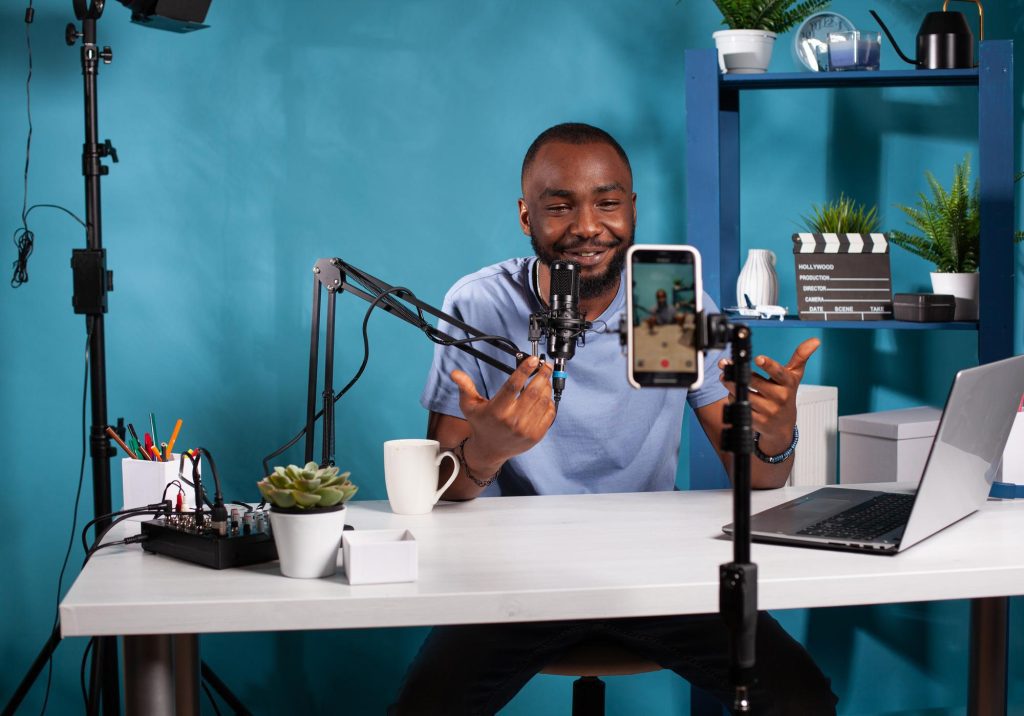Influencer marketing has emerged as a powerful strategy for brands to connect with their target audience and drive engagement. Social media influencers, with their large following and trusted voices, have the ability to shape consumer opinions and influence purchasing decisions. Collaborating with influencers allows brands to tap into their established credibility and leverage their reach to create authentic and impactful marketing campaigns.
This article delves into the art of influencer marketing and provides valuable insights and strategies for successful collaborations with social media influencers. From understanding the role of influencers in modern marketing to identifying the right influencers for your brand, developing collaboration strategies, and creating engaging content, we will explore the key steps and considerations in executing an effective influencer marketing campaign. Furthermore, we will delve into the importance of building long-term relationships with influencers and showcase real-life case studies to illustrate the potential and impact of influencer marketing.
Whether you’re a small business or a global brand, mastering the art of influencer marketing can unlock immense opportunities to expand your reach, build brand awareness, and drive conversions. So, let’s dive into the world of influencer marketing and discover how you can harness the power of social media influencers to elevate your brand’s presence and connect with your audience in meaningful ways.
Who are Social Media Influencers?

Social media influencers are individuals who have established credibility, expertise, and a large following on various social media platforms. They have built a loyal audience by consistently creating and sharing engaging content that resonates with their followers. Their influence extends beyond their follower count; it lies in their ability to inspire, educate, and persuade their audience.
Based on the size of their fan base and the volume of engagement they provide, influencers can be divided into different categories. Mega-influencers often appeal to a broad audience and have millions of followers. Despite having a vast fan base, macro influencers sometimes concentrate on particular markets. Micro-influencers are good at focusing on a certain demographic because they have a smaller but very engaged audience in that area. Nano-influencers frequently operate in small local communities or specialized interest groups and have a loyal but limited fan base.
The success of influencers is greatly influenced by their authenticity and reputation. Because of the true connection, they have created with their audience through their material and interactions, they are trusted by them. Influencers can build enduring relationships with their followers by remaining open, truthful, and consistent in their communication. Higher levels of engagement, loyalty, and impact result from this authenticity.
Influencer marketing leverages the concept of social proof, where people are more likely to trust and emulate the actions of others. By partnering with influencers, brands tap into the power of social proof to showcase their products or services. When an influencer recommends or endorses a brand, their audience perceives it as a trustworthy recommendation, leading to increased brand credibility and potential customer conversions.
What are the Benefits of Influencer Marketing
Influencer marketing offers numerous advantages for brands seeking to reach their target audience in a more authentic and impactful way. Understanding these benefits is crucial for businesses looking to incorporate influencer marketing into their overall marketing strategy.
Increased brand visibility and reach
Partnering with influencers allows brands to tap into their existing audience and expand their reach to a wider demographic. Influencers have built a loyal following, and their content is often shared and discovered by their audience, leading to increased brand exposure and visibility.
Enhanced credibility and trust
Influencers are trusted authorities in their industry, and their followers value the credibility of their recommendations. Brands can capitalize on this trust by partnering with influencers who are real and credible to improve their own brand’s reputation and credibility with the influencer’s audience.
Targeted audience engagement
They have a deep understanding of their audience’s interests, preferences, and behaviours. By partnering with influencers who have followers that align with the brand’s target demographic, businesses can engage with a highly targeted audience, resulting in more meaningful interactions and potential conversions.
Content creation and storytelling
Influencers are adept content producers who know how to develop engrossing stories that connect with their audience. Working with influencers enables brands to access their imagination and storytelling skills, resulting in real and compelling content that presents the company’s goods or services in a more desirable and relatable light.
Amplified social media presence
On social media, influencers are widely present, and working with brands can result in a lot of buzz and engagement. Brands can expand their social media presence and reach a larger audience by utilizing the influencer’s social media networks.
Measurable results and ROI
Influencer marketing campaigns can be tracked and measured to evaluate their effectiveness and return on investment. By setting clear objectives and using appropriate metrics, brands can assess the impact of influencer collaborations and make data-driven decisions for future campaigns.
How to Identify the Right Influencers for Your Brand
A crucial step in executing a successful influencer marketing campaign is identifying the right influencers who align with your brand values, target audience, and marketing objectives. Here are key points to consider when selecting influencers for your brand collaboration:
1. Define your target audience: Begin by clearly understanding your target audience’s demographics, interests, and preferences. This knowledge will help you identify influencers whose followers closely match your target market, ensuring that your message reaches the right people.
2. Research influencer niches: Explore different influencer niches and determine which ones align with your brand’s industry, products, or services. Look for influencers who have established themselves as experts or enthusiasts in their respective niches, as their expertise and credibility will strengthen your brand’s association within that specific area.
3. Assess engagement and reach: Pay attention to the engagement levels and reach of potential influencers. Evaluate factors such as the number of followers, likes, comments, and shares they receive on their posts. A high engagement rate indicates that the influencer has an active and involved audience, increasing the likelihood of your message resonating with their followers.
4. Authenticity and brand alignment: Ensure that the influencer’s values and content align with your brand’s identity and messaging. Review their previous collaborations, content themes, and brand partnerships to ensure they are consistent with your brand’s image and values. Authenticity is key in influencer marketing, as followers can quickly identify insincere or forced partnerships.
5. Assess influencer credibility: Consider the influencer’s reputation and credibility within their industry and among their followers. Look for indicators of expertise, such as awards, certifications, or recognition from reputable sources. A credible influencer will have a positive impact on your brand’s reputation and perception among its audience.
6. Analyze past campaign results: Request case studies or data from potential influencers to evaluate the success of their previous collaborations. Examine metrics such as engagement rates, conversions, and the overall impact of their campaigns on the brands they have worked with. This information will help you gauge the effectiveness of their influencer marketing efforts.
7. Consider influencer authenticity and audience trust: Authenticity is a crucial factor in influencer marketing. Assess how genuine and relatable an influencer appears to their audience. Look for signs of trust and loyalty among their followers, such as positive comments, repeat engagement, and a genuine connection. Influencers who have built strong relationships with their audience are more likely to effectively communicate and promote your brand.
How to Develop an Influencer Collaboration Strategy

To maximize the impact of your influencer marketing efforts, it’s essential to develop a well-defined influencer collaboration strategy. This strategy will guide your interactions with influencers, set clear objectives, and ensure a successful partnership. Here are key points to consider when developing your influencer collaboration strategy:
1. Set clear goals and objectives: Start by defining your goals for the influencer collaboration. Are you aiming to increase brand awareness, drive sales, promote a new product, or improve engagement? Clearly outline your objectives to align the influencer’s efforts with your desired outcomes.
2. Identify collaboration opportunities: Determine the types of collaborations that best suit your brand and campaign goals. This could include sponsored content, product reviews, giveaways, influencer takeovers, or co-creating content. Choose collaboration opportunities that align with your brand’s values, products, or services, and consider the influencer’s expertise and preferred content formats.
3. Establish communication channels: Open and effective communication is crucial for successful influencer collaborations. Determine the preferred communication channels, such as email, messaging apps, or video calls, and establish a clear line of communication with the influencers. Regularly engage with them to provide guidance, feedback, and support throughout the collaboration process.
4. Define content guidelines: Provide influencers with clear guidelines on the key messaging, brand tone, and content requirements. Ensure that the influencer’s content aligns with your brand’s aesthetics, values, and desired brand image. However, also allow influencers creative freedom to maintain authenticity and make their content relatable to their audience.
5. Set realistic expectations: Discuss expectations regarding the content timeline, frequency of posts, and promotional efforts. Be transparent about any contractual agreements, compensation, or product exchange terms. Ensure that both parties have a clear understanding of their responsibilities and deliverables.
6. Measure and track performance: Establish metrics to measure the success of your influencer collaborations. This could include engagement rates, reach, website traffic, conversions, or brand mentions. Use tracking tools and analytics to monitor the performance of influencer-generated content and evaluate the impact on your brand’s goals.
7. Foster long-term relationships: Consider building long-term relationships with influencers who align well with your brand and consistently deliver positive results. Nurturing these relationships can lead to ongoing collaborations, increased brand advocacy, and stronger connections with their audience over time.
8. Compliance with regulations: Ensure your influencer collaborations comply with relevant advertising regulations and disclosure guidelines. Familiarize yourself with legal requirements, such as disclosing sponsored content or adhering to specific industry regulations, to maintain transparency and avoid any potential legal issues.
How to Build Good Relationships with Influencers in Influencer Marketing
Building strong and mutually beneficial relationships with influencers is a vital aspect of successful influencer marketing. By nurturing these relationships, you can establish trust, foster collaboration, and amplify the impact of your brand’s message. Here are key points to consider when building relationships with influencers:
1. Research and Engagement: Begin by conducting thorough research on potential influencers and their content. Engage with their posts, leave thoughtful comments, and share their content to demonstrate your genuine interest in their work. This initial engagement helps to create a connection and lays the foundation for building a relationship.
2. Personalized outreach: When reaching out to influencers, personalize your messages and demonstrate that you have taken the time to understand their content and audience. Highlight specific reasons why you believe they would be a great fit for your brand and explain the benefits they will gain from collaborating with you.
3. Authenticity and transparency: Transparency and authenticity are crucial in influencer marketing relationships. Be honest about your brand’s goals, expectations, and any compensation or product exchange involved in the collaboration. Avoid making promises you can’t keep and maintain open and clear communication throughout the partnership.
4. Collaboration opportunities: Offer influencers diverse collaboration opportunities that align with their content style, interests, and expertise. Provide them with the flexibility to choose the types of content they feel most comfortable creating and the creative freedom to express their unique voice and perspective. This approach fosters enthusiasm and creativity in their collaborations with your brand.
5. Value Exchange: Offer influencers value beyond financial compensation. Provide exclusive access to your brand’s events, products, or services. Offer them opportunities for co-creation, such as involving them in product development or seeking their input on future campaigns. Show appreciation for their work by highlighting their contributions and giving them credit for their impact.
6. Continuous support: Stay engaged with influencers beyond the duration of specific campaigns. Show ongoing support by regularly sharing their content, engaging with their posts, and providing feedback. Demonstrate your commitment to their success and help them grow their own audience by promoting their work within your brand’s networks.
7. Long-term collaborations: Consider nurturing long-term relationships with influencers who consistently deliver quality content and align well with your brand values. Long-term collaborations allow influencers to become more familiar with your brand, develop a deeper understanding of your audience, and create content that resonates authentically with their followers.
8. Recognition and appreciation: Recognize and appreciate the contributions of influencers to your brand’s success. Publicly acknowledge their work, highlight their impact, and express gratitude for their collaboration. This recognition not only reinforces their value but also encourages them to continue supporting your brand in the long run.
In conclusion, influencer marketing is a powerful strategy for brands to connect with their target audience and drive impactful results. By understanding the importance of building relationships with influencers, brands can tap into these individuals’ authenticity and influence.
Influencer marketing is a dynamic field that continues to evolve, and it requires constant adaptation and innovation. By staying up-to-date with industry trends, monitoring campaign performance, and analyzing data, brands can refine their influencer marketing strategies and maximize their return on investment.
Incorporating influencer marketing into your digital marketing strategy can yield significant benefits, including increased brand awareness, improved audience engagement, and enhanced credibility.
If you need help coming up with a proven strategy for marketing your brand or products/services, contact Digital Reach Consult today.




